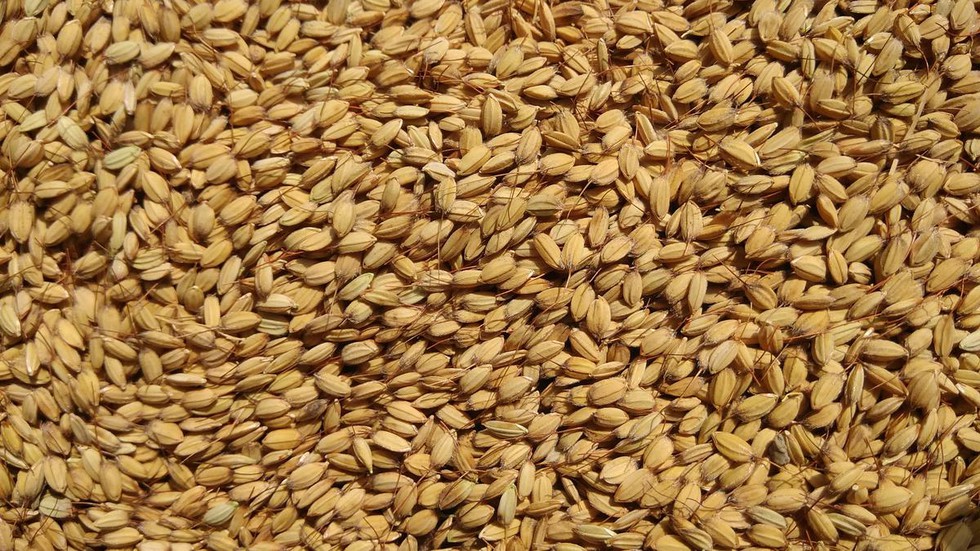The Kashmir Himalaya region is renowned for cultivating mushk budiji, an indigenous rice variety known for its exceptional aroma and taste. Recent research conducted by scientists at the Sher-e-Kashmir University of Agricultural Sciences and Technology (SKUAST), Srinagar, highlights the significant influence of altitude and temperature on the aroma development of mushk budiji.
Study on Aromatic Compounds
In a study published in Nature Scientific Reports, researchers identified approximately 35 aromatic compounds within mushk budiji rice samples collected from eight different altitudes ranging from 5,000 to 7,000 feet across the valley.
Revival of Mushk Budiji
Despite facing challenges such as rice blast disease, low yield, and lack of profitability, a revival program initiated by SKUAST scientists in 2007 has contributed to the slow but steady recovery of mushk budiji cultivation.
Role of Altitude and Temperature
Altitude and temperature were found to be crucial factors influencing the development of aroma in mushk budiji rice, as highlighted by the study.
Mechanisms of Aroma Development
The research utilized gas chromatography-mass spectroscopy (GC-MS) and an ‘electronic nose’ to analyze the flavor profile of mushk budiji samples collected from various locations. Through gene-expression analysis, the study aimed to understand how environmental factors influence the flavor profile of mushk budiji at different altitudes.
Identification of Aromatic Compounds
Researchers identified 35 volatile organic compounds (VOCs) in mushk budiji rice samples, including aldehydes and alcohols. Notably, the presence of 2-acetyl-1-pyrroline (2-AP), a known aromatic compound, was observed predominantly in samples collected from higher altitudes.
Export Potential and Economic Growth
The research findings suggest the potential for maximizing the export of mushk budiji by cultivating it in locations where environmental conditions optimize the expression of its flavor compounds. Additionally, innovative packaging strategies could enhance its market appeal, potentially leading to significant economic growth in the agricultural sector.
Limitations and Future Directions
While the study provides valuable insights into the correlation between altitude and aroma development in mushk budiji rice, it has certain limitations. These include the need for further research to comprehensively explore other environmental variables such as soil type and climatic conditions. Additionally, more studies are required to understand the mechanisms underlying heightened gene expression at different altitudes.
Multiple-Choice Questions (MCQs):
- What research methodology was used to analyze the flavor profile of mushk budiji rice?
- A) Spectrophotometry
- B) Gas chromatography-mass spectroscopy (GC-MS)
- C) Liquid chromatography
- D) Electrophoresis
- Answer: B) Gas chromatography-mass spectroscopy (GC-MS)
- Which compound, known for its aromatic properties, was found predominantly in mushk budiji samples collected from higher altitudes?
- A) Ethanol
- B) Acetic acid
- C) 2-acetyl-1-pyrroline (2-AP)
- D) Benzaldehyde
- Answer: C) 2-acetyl-1-pyrroline (2-AP)
- What is the significance of altitude and temperature in the development of aroma in mushk budiji rice?
- A) They influence the prevalence of rice blast disease.
- B) They affect the yield and profitability of the crop.
- C) They play a crucial role in the synthesis of volatile organic compounds (VOCs).
- D) They determine the soil type and climatic conditions.
- Answer: C) They play a crucial role in the synthesis of volatile organic compounds (VOCs).
- Which technique was utilized to assess the flavor attributes of rice samples in the study?
- A) Gas chromatography-mass spectroscopy (GC-MS)
- B) Polymerase chain reaction (PCR)
- C) Spectrophotometry
- D) Electrophoresis
- Answer: A) Gas chromatography-mass spectroscopy (GC-MS)
- What was highlighted as a potential strategy to enhance the export of mushk budiji rice?
- A) Increasing crop yield through genetic modification
- B) Cultivating the rice variety in regions with optimal environmental conditions
- C) Implementing strict quality control measures during cultivation
- D) Promoting the rice variety’s nutritional benefits
- Answer: B) Cultivating the rice variety in regions with optimal environmental conditions
